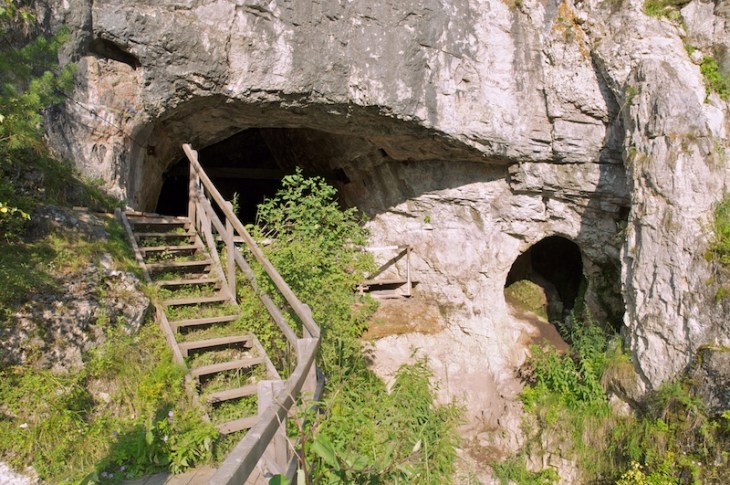New research is shedding light on the mating habits of our sometime closest relatives.
 |
| Researchers extracted DNA from this toe bone of a Siberian Neanderthal female who lived about 50,000 years ago. |
The first high-quality genome sequence of a Siberian Neanderthal female is throwing up racy details about our ancient relatives’ sex lives: Siberian Neanderthals mated within their families, the new research shows, while another group, the Denisovans, interbred with Neanderthals, humans and a third, as yet undiscovered mystery hominin living in Asia.
The first anthropologists relied on skull shapes and bone lengths of fossils to identify ancestors in the hominin family tree. Recently though, geneticists have bulked up their toolset, and have identified new species from material taken from mere milligrams of bone. This time, they didn't even need that. "There is not even a bone splinter here," Svante Pääbo, a geneticist at the Max Planck Institute for Evolutionary Anthropology, said of the unknown species. "It’s an inference from those other genomes."
By comparing genetic evidence of the Neanderthal female who lived some 50,000 years ago, with the sequence of a Denisovan girl published in August last year, Pääbo and team discovered a small but discrete signature of a much older species, which the paleoanthropologists suspect might be Homo erectus. The full analysis of the Siberian Neanderthal genome is published in the Thursday issue of Nature.
 |
| The entrance to the Denisova cave where researchers came across a fragment of bone from a Denisovan girl's pinkie finger in 2008, and uncovered the Neanderthal toe bone in 2010. |
[...]Inbred bunch
New insights into the Neanderthal genome comes from genetic material extracted from the toe bone of a female found in the Denisova cave in the Altai mountains of Siberia. Using techniques refined in the last few years, researchers extracted enough detail to create a genetic picture of the individual's parents.
"We can see that the mama and papa of the individuals were very closely related — half siblings or so," Pääbo said.
There was also a lack of diversity in the genetic material which indicated that sex between closely related individuals within the Siberia Neanderthal community was a regular affair for generations before the girl's time.
A close read of Neanderthal groups that lived in other parts of Europe would indicate if the practice of inbreeding was common across the species. It is possible, Pääbo said, that the Altai Neanderthals were "such a small population that you’ve hardly any other choice."
"Identifying inbreeding down to the level of what degree of relation was mating with who is huge!" Ross Barnett, a post-doctoral researcher at the University of Copenhagen who was not involved with the study, wrote to NBC News. "For the first time we are seeing the home life of our extinct relatives."
I'd be really interested in finding that out myself. Was it merely compensating behavior, because of their small population in the north, or
was it a species-wide breeding strategy? Neanderthal social groups were
much smaller than modern human groups.
No comments:
Post a Comment